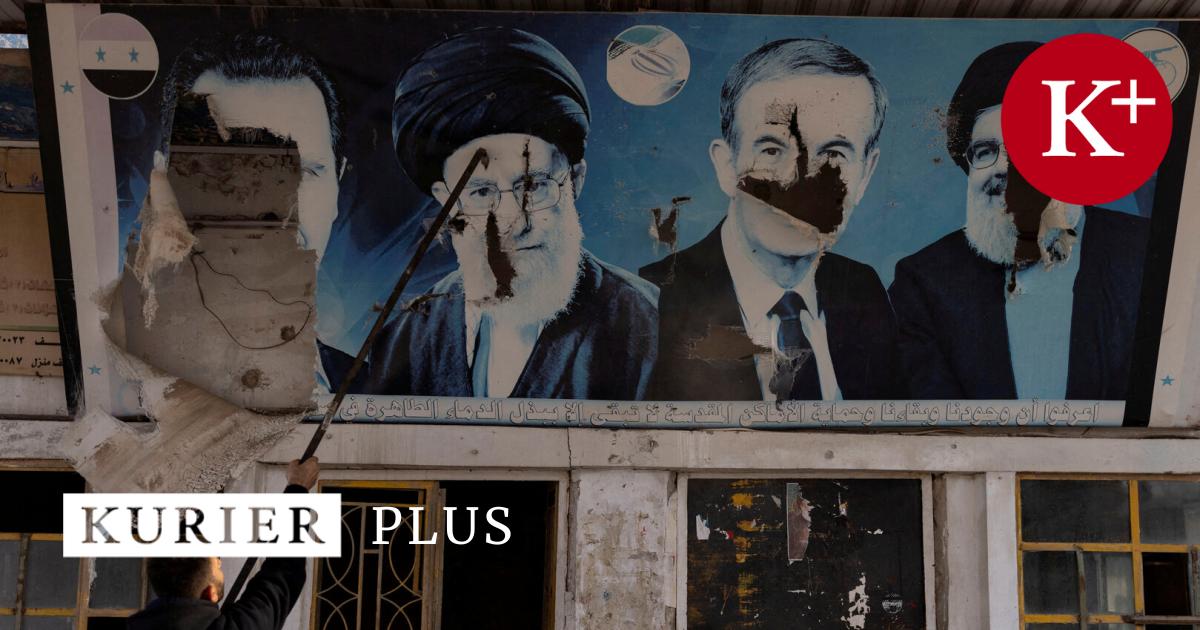I have been talking about the beginning of a long -term revolutionary process in Iran since 2017/18. Its end is difficult to assess, but could come more suddenly than expected – similar to Syria. Between the two regimes, not only parallels can be seen, but also differences. There was hardly any support for Assad within his own population, so this is also the regime in Iran, the extremely thinned social basis of which has perhaps still comprised 15 percent for years.
In Syria we saw how the army has partly emerged without resistance. That was also a result of the measly payment of the armed forces. On the one hand, we see in Iran that the revolutionary guards are certainly not such paper tigers as the Syrian army has turned out to be one. On the other hand, there is a socio -economic gap between the simple Iranian soldiers suffering from horrendous inflation, compared to an oligarchy of the generals.
In short: The Islamic Republic of Iran is not as rotten as the Assad regime was in the end, but there are clear cracks within the Iranian security and repression apparatus. The Iranian regime had problems to mobilize this in the suppression of the revolutionary “woman, life, freedom” protests in 2022.
As a rule, the regime does not allow problems. Recently, a new, even stricter headscarf law was postponed – for fear of renewed major protests, as it existed in 2022?
Yes, the protests still influence Iranian domestic politics and you are afraid to implement certain laws, even though you are still practiced. You don’t go to the utmost so that no spark is inflamed. This also applies when it comes to energy subsidies that have been shortened for a long time due to the empty state coffers – but the last attempt in November 2019 also came to nationwide protests.
The Iranian economy is very bad for several reasons, one is the US sanctions. Against this background, Tehran looks nervously at the official reorganization of arch enemy Donald Trump. Which escalation is conceivable in this argument?
The Iranian leadership takes two players seriously. On the one hand, Israel, which has trimmed the wings of Iranian regional policy and has eliminated the air defense systems of the system’s strategically important facilities. There is a fear that another, greater attack on Iran will occur, which could turn out to be devastating for the regime.
And just Trump. After it has been re -elected, the value of the Rial currency has reached another historical low point. Iranian officials said about Trump’s last term that Iran had ever been the most difficult years for the regime under his policy of “maximum pressure”-it lost at least $ 200 billion in oil revenue due to the sanctions. The regime may soon no longer be able to pay its state employees – including the repression apparatus – as it wants.
The combination of the military strength of Israel, the economic crisis and Trump’s unpredictability means that 2025 – in order to formulate the least – will become an extremely difficult year for the Iranian regime.
Her book is called “Iran – as the West reveals its values and interests”. What are the biggest mistakes in its view in its Iran policy in Europe?
There is a great parallelism between European Russia and Iran politics. This includes the idea that trading with authoritarian regimes leads to an economic and political opening on its part. But that’s a Fata Morgana. The Europeans ignore certain measures and glorify Iranian presidents, also the current Peseschkian – as they used to present Putin as a modernizer and reformer. One focuses on a president and transfigured him, although the real power has been with Ali Khamenei since 1989 – which is not only the religious, but also political and military leader – as well as the Islamic revolutionary guard. So Europe wants to justify an advancement attempt with Tehran.
To give another example: European Iran policy focuses primarily on the Iranian nuclear program, which is a very Eurocentrist perspective and does not meet the geopolitical conditions on site. Several countries in the region have seen the Vienna Atom Deal in 2015, for which the West celebrated itself. Because there you never saw the nuclear program as the greatest danger from Iran – but its rockets, drones and above all the militias in the region.
The Iranians know how much the topic of nuclear program in Europe ensures panic – and always play with it, similar to Putin. If you only focus on it, this is a strategic advantage for Tehran. Europe then only reacts, Iran pretends the beat.
What could be a more active EU-Iran policy that corresponds to both the European values and a re-approach to one – at least small – Would make atomic deal more likely?
It takes a paradigm shift -away from a short -term and visual policy that stabilizes the regime through economic cooperation. The negotiating agenda must be expanded. Europe also has printing opportunities that it has not yet used. The dozens of EU sanctions have been mild since 2022 due to the obsession with the atomic deal. They could be sharper and they should go against the main and third-class figures of the regime instead of the main and third-class figures. Sanctions could also be imposed against the Iranian oligarchy in Europe, so you hardly saw anything.
Another option: The so-called Snap-Back mechanism of the nuclear deal-i.e. the re-establishment of UN sanctions that Europeans could now activate themselves without being able to insert Russia or China Veto. This option expires in October this year. The revolutionary guards could also be used on the EU terrorist list.
And, more importantly: Europe could try to coordinate western Iran politics with Washington. This could also gain Europe in influence and standing – because without the United States Iran does not take it seriously.
